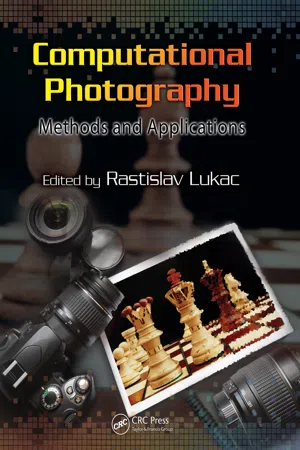
Computational Photography
Methods and Applications
Rastislav Lukac, Rastislav Lukac
- 564 Seiten
- English
- ePUB (handyfreundlich)
- Über iOS und Android verfügbar
Computational Photography
Methods and Applications
Rastislav Lukac, Rastislav Lukac
Über dieses Buch
Computational photography refers broadly to imaging techniques that enhance or extend the capabilities of digital photography. This new and rapidly developing research field has evolved from computer vision, image processing, computer graphics and applied optics—and numerous commercial products capitalizing on its principles have already appeared in diverse market applications, due to the gradual migration of computational algorithms from computers to imaging devices and software.
Computational Photography: Methods and Applications provides a strong, fundamental understanding of theory and methods, and a foundation upon which to build solutions for many of today's most interesting and challenging computational imaging problems. Elucidating cutting-edge advances and applications in digital imaging, camera image processing, and computational photography, with a focus on related research challenges, this book:
-
- Describes single capture image fusion technology for consumer digital cameras
-
- Discusses the steps in a camera image processing pipeline, such as visual data compression, color correction and enhancement, denoising, demosaicking, super-resolution reconstruction, deblurring, and high dynamic range imaging
-
- Covers shadow detection for surveillance applications, camera-driven document rectification, bilateral filtering and its applications, and painterly rendering of digital images
-
- Presents machine-learning methods for automatic image colorization and digital face beautification
-
- Explores light field acquisition and processing, space-time light field rendering, and dynamic view synthesis with an array of cameras
Because of the urgent challenges associated with emerging digital camera applications, image processing methods for computational photography are of paramount importance to research and development in the imaging community. Presenting the work of leading experts, and edited by a renowned authority in digital color imaging and camera image processing, this book considers the rapid developments in this area and addresses very particular research and application problems. It is ideal as a stand-alone professional reference for design and implementation of digital image and video processing tasks, and it can also be used to support graduate courses in computer vision, digital imaging, visual data processing, and computer graphics, among others.